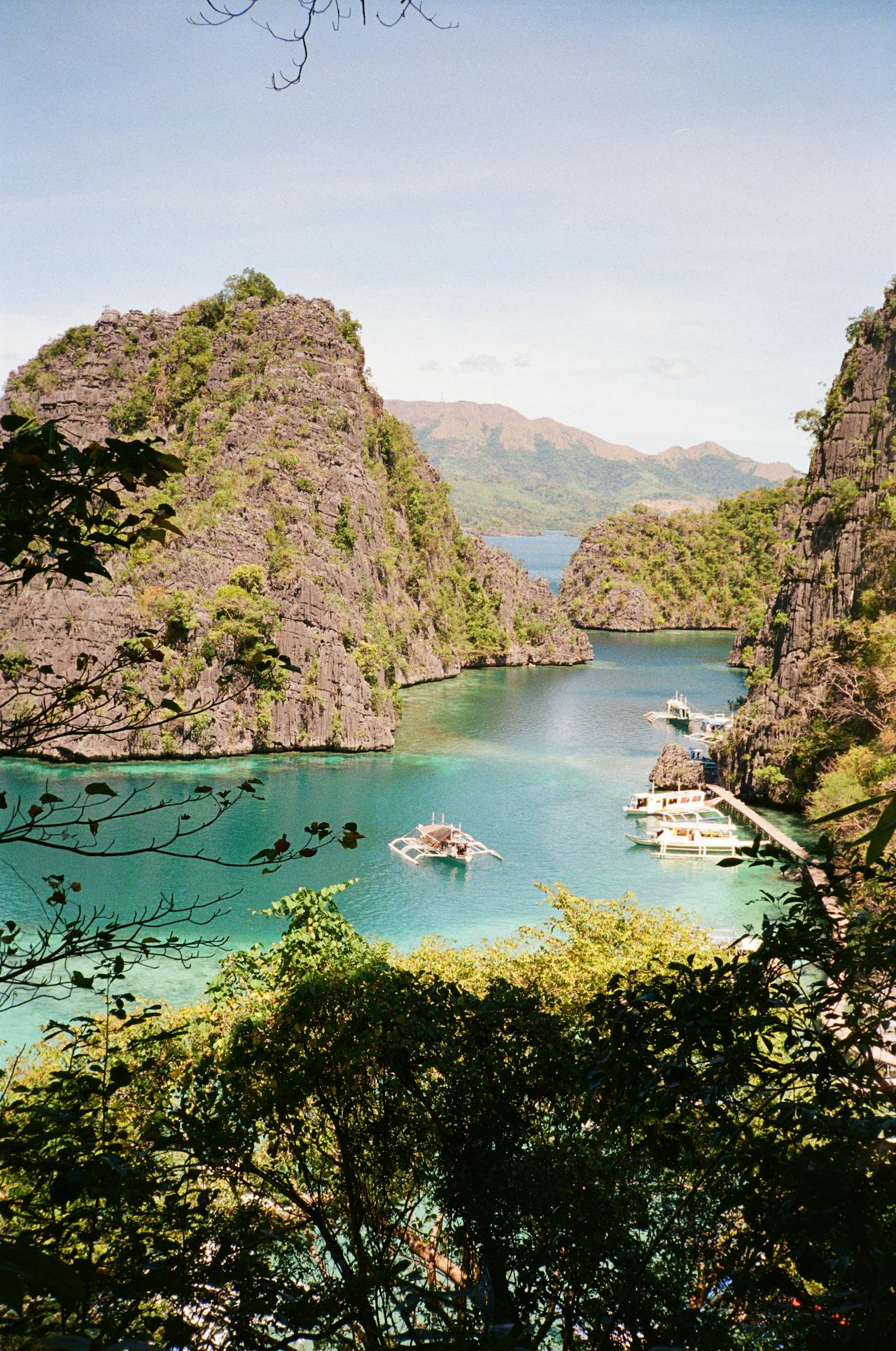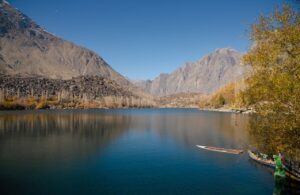Introduction
What are the 5 P’s of sustainable tourism? Sustainable tourism isn’t just about visiting beautiful places—it’s about making sure that travel has a positive impact on both the environment and local communities. The 5 P’s—People, Planet, Profit, Partnerships, and Promotion—serve as key principles to guide how we approach tourism in a responsible and balanced way. By understanding these principles, travelers and businesses can help create a more sustainable future for tourism. These ideas focus on supporting local cultures, reducing environmental footprints, and fostering long-term economic benefits. In this post, we’ll explore each of the 5 P’s and how they contribute to a tourism model that benefits everyone involved.
Table of Contents
What Are the 5 P’s of Sustainable Tourism?
The 5 P’s of Sustainable Tourism represent a framework used to guide responsible tourism practices. They focus on ensuring that tourism activities are not only economically beneficial but also socially and environmentally sustainable. The 5 P’s include:

Promotion: Promoting sustainable travel and raising awareness about responsible tourism helps encourage travelers to make informed choices that contribute to the long-term sustainability of the industry.
People: This focuses on supporting local communities by providing fair wages, respecting cultural traditions, and ensuring that tourism benefits residents.
Planet: This principle emphasizes protecting the environment by minimizing waste, conserving natural resources, and reducing the carbon footprint associated with tourism activities.
Profit: Sustainable tourism should generate economic profits for businesses while ensuring the long-term viability of the tourism industry without compromising the environment or society.
Partnerships: Collaboration among all stakeholders, such as governments, businesses, and local communities, is crucial for creating sustainable tourism practices.
Let’s break down each of these P’s and explore how they work in tandem to create a more sustainable future for tourism.
1. People – Prioritizing Local Communities
In sustainable tourism, one of the key principles is ensuring that tourism contributes positively to local communities. The well-being of the local population should always be a primary consideration when developing and promoting tourism activities. Sustainable tourism aims to create a balance where the cultural integrity, economic welfare, and social health of the local communities are not only preserved but enhanced.

Tourism can bring financial benefits to local economies by creating jobs, boosting small businesses, and increasing the demand for local products and services. However, tourism can also have negative effects if not managed carefully. Overcrowding, cultural dilution, and exploitation of resources can harm the very communities that depend on tourism for income. The People principle, therefore, emphasizes responsible tourism practices that provide lasting benefits to the local population without causing harm.
How Does the “People” Principle Work?
The People principle ensures that local communities benefit from tourism while maintaining control over its impact. It emphasizes fair wages, equitable working conditions, and the preservation of culture. Local people are encouraged to take leadership roles in tourism, shaping their own futures and sustaining their lifestyles.
Sustainable tourism encourages travelers to engage with communities in a respectful, ethical way. Tourists are urged to support local businesses, buy handmade goods, and participate in cultural exchanges, helping to boost local economies without exploiting traditions.
In Pakistan, eco-tourism in places like Hunza Valley or Gilgit-Baltistan offers an opportunity for local communities to thrive. Small-scale accommodations and local handicrafts provide livelihoods and preserve cultural heritage. By supporting responsible practices, such as respecting customs and promoting fair trade, tourism can create lasting, positive impacts, preventing overtourism and protecting cultural identities.
By prioritizing People, tourism can help improve local lives and ensure that the benefits of travel are shared equitably, creating sustainable growth for all.
2. Planet – Protecting the Environment
In sustainable tourism, the Planet principle plays a crucial role in ensuring that our travel habits do not harm the environment. Sustainable tourism wouldn’t be possible without a strong commitment to minimizing the environmental footprint of tourism activities. This principle encourages travelers and businesses to focus on reducing pollution, conserving natural resources, and protecting wildlife.
Tourism, if not managed responsibly, can lead to environmental degradation, including waste accumulation, carbon emissions, deforestation, and the destruction of natural habitats. The Planet principle emphasizes the need for sustainable practices that reduce the negative impact on ecosystems while maintaining the beauty and biodiversity of our planet.
How Does the “Planet” Principle Work?
The Planet principle is implemented through eco-friendly practices such as reducing carbon emissions, supporting renewable energy sources, and ensuring waste management and resource conservation. Tourism businesses are encouraged to adopt greener technologies, such as using solar energy in eco-lodges, encouraging public transportation, and offering carbon-offset programs for travelers. It’s also crucial to promote wildlife conservation by discouraging activities that harm endangered species and their habitats.
For example, in Pakistan, eco-friendly travel might involve staying in eco-lodges that use solar power, minimize plastic waste, and practice water conservation. Additionally, tourists can contribute to the Planet principle by choosing responsible wildlife experiences that prioritize the protection of endangered species and supporting conservation initiatives that aim to preserve the country’s natural beauty. Participating in guided tours that follow designated trails, staying on paths to protect wildlife habitats, and supporting clean-up programs for national parks are practical ways to ensure that tourism activities contribute positively to the environment.
3. Profit – Ensuring Economic Viability
While environmental and social responsibility are important, sustainable tourism must also be economically viable for both businesses and local communities. The Profit principle ensures that tourism remains financially sustainable without compromising other key sustainability goals. In sustainable tourism, profitability is balanced with a commitment to environmental conservation and social well-being, ensuring that tourism can continue to generate income for future generations.
Tourism is a significant source of income for many destinations, particularly those relying on eco-tourism and community-based tourism. For tourism to remain sustainable in the long term, it must create financial value while promoting responsible travel practices that protect the local environment and culture.
How Does the “Profit” Principle Work?
The Profit principle works by promoting sustainable business models that generate economic growth without causing harm to the environment or local communities. Sustainable tourism businesses focus on offering eco-friendly travel experiences and ensure that their operations support local economies and generate jobs for the local population. This principle encourages responsible pricing, where travelers are willing to pay a premium for unique, sustainable experiences, thereby supporting the growth of local businesses.
For example, eco-friendly tourism in Pakistan can boost the local economy by offering travelers sustainable alternatives like eco-lodges, nature treks, and cultural tours that focus on preserving the region’s traditions. Such initiatives not only generate income for small businesses but also provide a stable source of income for local communities, ensuring long-term financial stability while maintaining the principles of sustainability. Reinvesting profits into local infrastructure, conservation projects, and community programs ensures that the economic benefits of tourism are shared fairly and sustainably.
4. Partnerships – Collaborating for a Sustainable Future
The Partnerships principle emphasizes the importance of collaboration among all stakeholders in the tourism industry. Whether it’s governments, tourism businesses, local communities, or NGOs, working together allows for more effective, sustainable solutions. Successful partnerships lead to the development of policies and practices that benefit all parties, ensuring that tourism contributes to social, economic, and environmental sustainability.
Collaboration between different stakeholders can lead to shared resources, best practices, and innovative solutions to sustainability challenges. Through these partnerships, stakeholders can leverage their expertise and resources to create a more unified approach to sustainable tourism.
How Does the “Partnerships” Principle Work?
The Partnerships principle encourages cooperation across sectors to develop strategies that address the environmental and social challenges associated with tourism. This includes working with local governments to implement policies that protect natural areas, collaborating with NGOs to promote wildlife conservation, and partnering with local businesses to support responsible tourism initiatives.
For example, in Pakistan, local tour operators, environmental NGOs, and government agencies can work together to promote sustainable travel experiences. These collaborations can support conservation efforts, raise awareness about responsible tourism, and implement policies that regulate and protect the country’s unique natural and cultural heritage. By collaborating on marketing and resource-sharing, these partnerships can also enhance tourism experiences while ensuring that sustainable practices are maintained throughout the industry.
5. Promotion – Advocating for Sustainable Travel
The Promotion principle focuses on raising awareness about sustainable travel practices and advocating for responsible tourism. As more travelers become aware of the importance of sustainable tourism, the demand for eco-friendly travel options will increase. Promoting responsible travel practices ensures that tourists make informed decisions, which helps reduce the negative environmental and social impacts of tourism.
Raising awareness about sustainability can also create a positive feedback loop, encouraging more destinations and businesses to adopt sustainable practices. Effective promotion involves marketing eco-friendly travel experiences and educating tourists about how their actions can positively or negatively impact the destinations they visit.
How Does the “Promotion” Principle Work?
The Promotion principle works by educating tourists on the benefits of sustainable tourism and advocating for responsible travel behaviors. This includes highlighting destinations that are committed to environmental conservation, showcasing businesses that follow sustainable practices, and encouraging travelers to choose experiences that benefit local communities. It also involves using digital platforms like social media, blogs, and websites to spread awareness about sustainable tourism options.

For instance, promoting eco-friendly travel in Pakistan might involve spotlighting destinations like the Hunza Valley or Gilgit-Baltistan, where tourism is centered on protecting the environment while offering cultural and natural experiences. By using digital channels to promote eco-friendly activities such as hiking, visiting eco-lodges, and supporting local handicrafts, travelers are encouraged to make conscious choices that have a positive impact. Social media campaigns, sustainability blogs, and influencer partnerships can also amplify these messages and encourage more people to travel responsibly.
How the 5 P’s Contribute to Sustainable Tourism in Pakistan
H2: How the 5 P’s Contribute to Sustainable Tourism in Pakistan
Pakistan’s tourism industry is rich in natural beauty, cultural heritage, and diverse wildlife. From the towering peaks of the Himalayas to the pristine beaches of the Arabian Sea, the country has an abundance of stunning destinations waiting to be explored. However, for tourism to be truly sustainable, it’s essential to approach it with a responsible mindset. This is where the 5 P’s of sustainable tourism come into play. Understanding how these principles apply to Pakistan can help shape the future of tourism in a way that preserves the environment, supports local communities, and promotes long-term economic prosperity.

By incorporating the 5 P’s—People, Planet, Profit, Partnerships, and Promotion—into tourism practices, Pakistan can offer a more balanced approach to tourism that benefits not only visitors but also the people and the environment. As the country continues to embrace sustainable tourism, these principles will help protect its unique landscapes, encourage responsible travel behaviors, and create opportunities for local communities to thrive. Sustainable tourism in Pakistan has the potential to become a powerful tool for preserving the nation’s rich heritage while providing travelers with memorable and meaningful experiences.
Promoting Responsible Tourism in Pakistan
Promoting responsible tourism is at the core of Pakistan’s sustainable tourism efforts. By focusing on the 5 P’s of sustainable tourism, both travelers and local businesses can contribute to a more eco-conscious and socially responsible tourism industry. This starts with supporting local communities, respecting cultural heritage, and ensuring that tourism is beneficial in the long term.
For example, in Pakistan, promoting eco-lodges in areas like the Swat Valley or the Gilgit-Baltistan region can help minimize the negative impacts of mass tourism while promoting eco-friendly practices. By choosing to stay at locally-owned accommodations that prioritize sustainability, travelers are directly contributing to the local economy and preserving the region’s natural beauty. Similarly, purchasing handicrafts and products from local artisans, such as those in Hunza, supports the livelihoods of the people while preserving traditional craftsmanship.
The 5 P’s encourage a deeper connection between travelers and the local culture, emphasizing the importance of respecting local customs and traditions. As the country develops its sustainable tourism infrastructure, adopting these practices will ensure that tourism benefits everyone, from local communities to visitors.
Enhancing Visitor Experiences
Eco-friendly travel in Pakistan isn’t just about minimizing environmental damage—it’s also about enriching the visitor experience. Sustainable tourism allows travelers to engage with local culture in a more meaningful way, offering opportunities to witness Pakistan’s stunning landscapes, interact with local communities, and participate in activities that promote environmental conservation.
Prioritizing sustainability means visitors can enjoy experiences that are not only memorable but also leave a positive impact on the regions they visit. In Pakistan, travelers can explore breathtaking sites like the Karimabad Valley, take part in wildlife safaris in the Thar Desert, or visit local communities that actively engage in preserving traditional ways of life. These experiences are not just about sightseeing; they offer the opportunity to immerse oneself in a way that contributes to the local culture and environment.
Sustainable tourism also promotes education and awareness. Tourists are more likely to learn about the importance of conserving resources, reducing waste, and protecting wildlife. This enhanced experience empowers travelers to make responsible choices that benefit the environment, local cultures, and their overall well-being.
Conclusion: Embracing the 5 P’s for a Sustainable Tourism Future in Pakistan
Adopting the 5 P’s of sustainable tourism—People, Planet, Profit, Partnerships, and Promotion—will play a crucial role in shaping a responsible and thriving tourism industry in Pakistan. These principles ensure that tourism benefits the environment, supports local communities, and preserves the country’s rich heritage for future generations.
By integrating these values, Pakistan can balance economic growth with environmental conservation, creating a tourism model that benefits everyone. Local communities will gain economically, travelers will have authentic experiences, and the environment will be protected for years to come.
Collaboration between the government, businesses, and local communities is key to implementing these strategies effectively. With increasing global demand for sustainable travel, Pakistan has the opportunity to position itself as a leader in eco-tourism, offering both stunning landscapes and responsible travel options for visitors.
FAQ
Question1. How does sustainable tourism empower locals?
Answer. Sustainable tourism empowers locals by giving them control over tourism, enabling cultural preservation and economic growth.
Question2. What can tourists do to support the “People” principle?
Answer. Tourists can support local businesses, buy crafts, and engage in cultural activities to positively impact communities.
Question3. How does sustainable tourism prevent cultural exploitation?
Answer. It prevents exploitation by promoting respectful travel, ensuring locals control tourism and protect their heritage.




